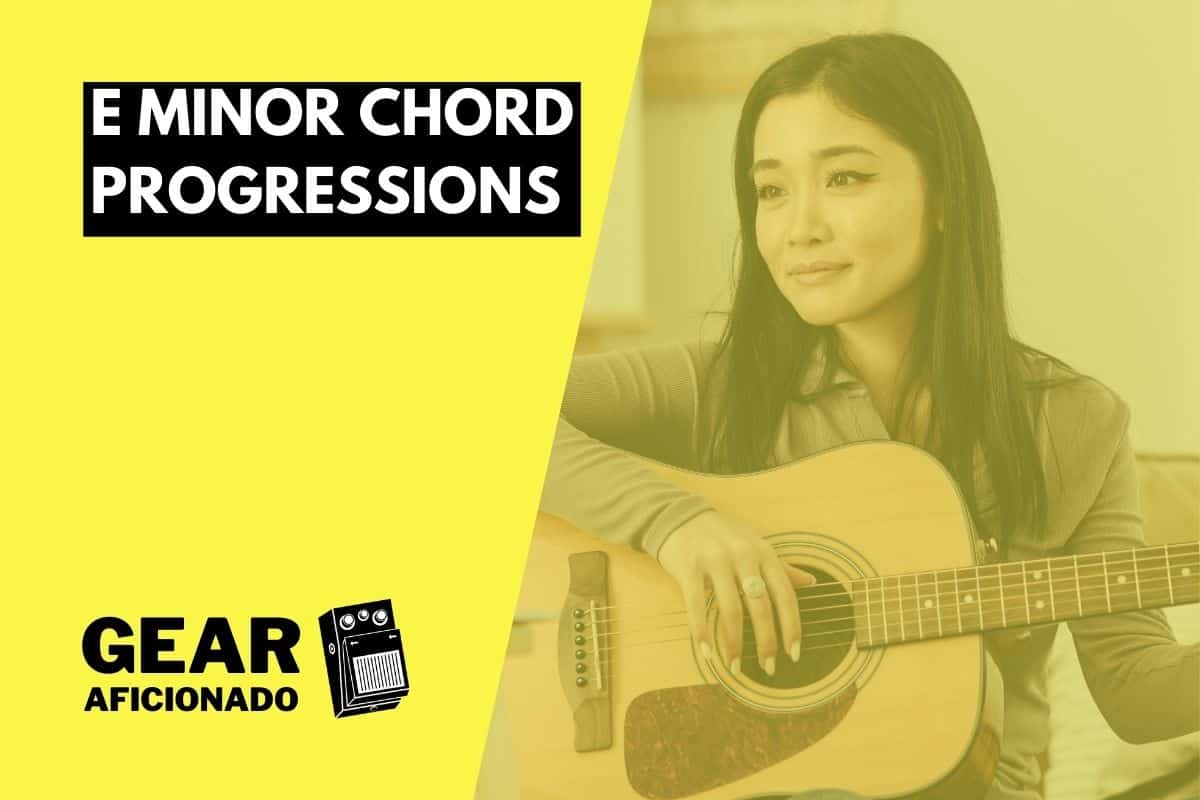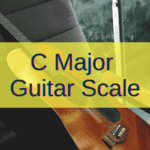E minor is one of the most used scales in Western music. Yes, you can find it fueling the outrageous heavy metal tones of bands like Metallica but also in songs like “Eleanor Rigby” by The Beatles or “Sultans of Swing” by Dire Straits.
Yes, there’s a lot to discover and a lot to have fun with when you’re playing in this scale, and today, we’re going to go deep into it. You’ll learn to use it to make music and also some of the most famous chord progressions of all time to get into the E minor mood.
Are you ready to unveil the secret wonders of this scale? Let’s do this!
Breaking The Minor-Scale Myth
Minor scales are, by definition, the sad side of music. Yes, there’s just something bittersweet about a minor chord that calls for emotion and brings audiences closer to the artist.
Yet, that is a myth. Yes, it is a myth that has been going strong from generation to generation. As with any myth, there’s a part of it that’s true and another part of it that is, well, made up.
In this case, the true part is that there’s a gloomy atmosphere in the scale given by the minor chords, but the part in which this turns into a myth is that the scale can also be used to write upbeat songs given the major chords in it.
For example, chord progressions that utilize the III, VI, and VII degrees will remain in major-chord territory. Therefore, if you use the E minor scale and play a chorus that goes III, VI, VII, or G, C, D, you’ll be playing an upbeat chorus-like guitar part and still playing a minor scale.
So, it’s time to bring down the myth: not all songs written on major scales are upbeat and not all songs written on minor scales are dark or sad.
In fact, today, in this very article, you’ll learn all the secrets of the E minor scale so you can use it to extend your current chords palette and paint beautiful new sonic landscapes.
Introducing the E Minor Scale
Now that we’ve destroyed the minor-scale myth, it’s time to introduce the E minor scale in all its splendor. Let’s take a look at the notes and intervals that form the scale.
| E Minor Scale | ||||||
| I | II | III | IV | V | VI | VII |
| E | F# | G | A | B | C | D |
| W | H | W | W | H | W | W |
As you can see, the formula for this scale is given by the W and H letters written below the note names. The W means a whole tone (2 frets for us) and the H means half a tone (1 fret for us).
These intervals between the notes are what give the scale its main characteristics. For example, the fact that you only have an F# gives the E minor scale a unique sound when compared to all the other scales in music. How so? You might be asking. Well, the answer is very simple: the formula that is written beneath the notes is the same for every minor scale. Therefore, when you pour any other scale into the same formula, you get different results.
For example, the scales of B minor and C minor use the same formula with very different results:
| B Minor Scale | ||||||
| I | II | III | IV | V | VI | VII |
| B | C# | D | E | F# | G | A |
| W | H | W | W | H | W | W |
| C Minor Scale | ||||||
| I | II | III | IV | V | VI | VII |
| C | D | D# | F | G | G# | A# |
| W | H | W | W | H | W | W |
So, each of these minor scales uses a common formula to give you a unique result. The result, we can say, is the particular sound of a given scale.
As an example, if I come across a C# and an F# in a progression or scale, I know it’s not E minor. How do I know? Well, very simple: there’s no C# in E minor. On the contrary, we can say it is B minor. Also, if you come across a D#, G#, and A# in a scale or progression, you’ll know you’re not in E minor or B minor, but in C minor.
Let’s Turn it Into Chords!
Now, all the above sounds awesome and is a great set of rules to add to your musician’s toolbox. Yet, we can’t make chord progressions when we are talking about notes instead of chords, right? Well, it’s time for me to introduce you to the minor, major, and diminished formula for all the minor scales. Yes, just like we have to respect the whole-tone and half-tone intervals, we also have to respect the major, minor, and diminished quality of the chords. In order.
Let’s see:
| I | II | III | IV | V | VI | VII |
| Minor | Diminished | Major | Minor | Minor | Major | Major |
So, according to this formula, what we have here is the quality of the chords we need to use when playing a minor scale (whichever minor scale it is). Let’s mix this information with the E minor scale to see what we get:
This is a formula you can apply to any and all minor scales. All you have to do is write down the first degree or root note and then move on from there utilizing the intervals and the chord qualities given above. That will allow you to create any scale you need to whether it is for soloing or songwriting.
In the specific scope of this piece, you now know what chords you need to use to fill the chord progressions you’ll see below.
Some Voicings for The Chords
Speaking of the chords for the scale, it’s time we take a look at some of the shapes we’ll be using to play our chord progressions. These are the simplest incarnation of the chords, but be free to find other voicings, shapes, and positions that you like to play the songs below.
Also, if you’re an avid neo-soul, jazz, blues, or RnB player, feel free to add seventh, ninth, or thirteenth notes to any (or all) of these chords to make their sound closer to the musical style you’re trying to play.







7 E Minor Chord Progressions
- i – v – i – iv
- i – IV – V
- i – iv – i – bVI – V – i
- i – bVI – i – iv – i – iv – bVI – V – i
- i – v – bVII – i – v – iv – i – v – bVII – i
- i – bIII – bVII – i – bVII – i
- i – bVII – i – bVI – bIII – i – bIII – bVII – i
The Bottom End
The E minor scale (and every minor scale) is an invitation to step into an unknown sonic territory with your compositions. Yes, it is a broad palette of colors that includes some sad and dark tones mixed with some upbeat chords that can take your compositions to the next level.
What I mean by that is that you should dive deep into the nuances this key offers and use it in your favor. Take your music from a 2-d approach to a 3-d one and connect with your fans like never before.
After all, a bittersweet, happy and sour, upbeat and sad key is the closest you can get to real life in the music world.
Happy (minor key) playing!

Hello there, my name is Ramiro and I’ve been playing guitar for almost 20 years. I’m obsessed with everything gear-related and I thought it might be worth sharing it. From guitars, pedals, amps, and synths to studio gear and production tips, I hope you find what I post here useful, and I’ll try my best to keep it entertaining also.





